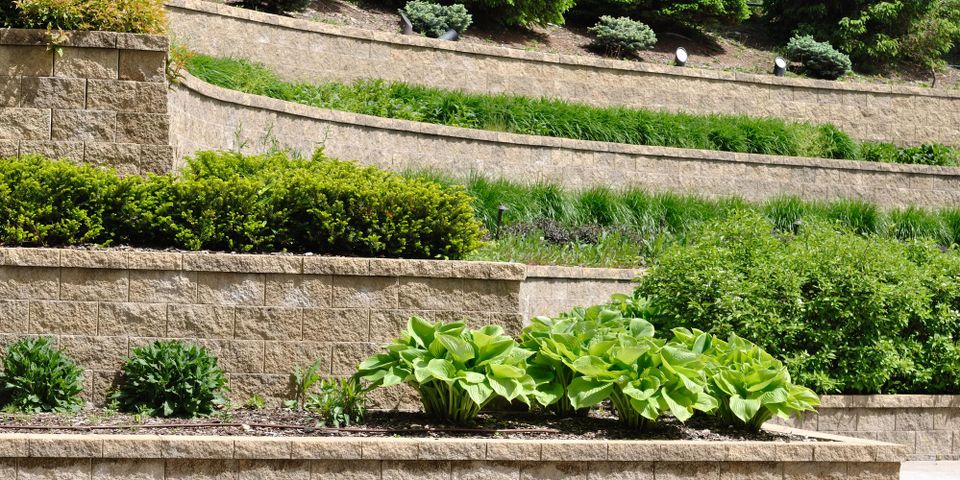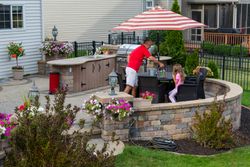
A retaining wall is a structure that can help you vary your landscaping design and work around the slope of your property. These walls fit well in both functional gardens and picturesque front yards, and they can be easily added by a landscape contractor. Here's what you need to know to decide if they're right for your property.
What Is a Retaining Wall?
A retaining wall holds back soil with a higher ground level from sliding into an area on another side with a lower ground level. It can be made from a variety of materials, including functional corrugated metal, beautiful stone or concrete pavers, brick, wood, or any other sturdy building material. There are several ways to anchor the wall with hidden supports to make sure it's strong enough to hold back the weight of the earth on the other side.
What Are the Landscaping Benefits of a Retaining Wall?
 A retaining wall creates two flat sections of ground out of one sloped area. This makes your yard more comfortable to walk on and convenient to plant on. It also helps reduce problems with erosion. A retaining wall can create raised garden beds or planters to vary the height of your garden for a beautiful visual effect. It can also be used to mark out paths and different areas of the yard for different purposes.
A retaining wall creates two flat sections of ground out of one sloped area. This makes your yard more comfortable to walk on and convenient to plant on. It also helps reduce problems with erosion. A retaining wall can create raised garden beds or planters to vary the height of your garden for a beautiful visual effect. It can also be used to mark out paths and different areas of the yard for different purposes.
Are You a Good Candidate for a Wall?
If you've had erosion problems, this garden feature can help keep your topsoil in place. It also helps combat a shallow slope on your property, although very steep slopes may still need other solutions. Finally, it can add an elegant touch to your garden if you want to increase your curb appeal.
If you want to add a retaining wall to your landscaping, contact Eliot's Landscape in Bulverde, TX. Serving Comal County, they have over 20 years of experience serving both commercial and residential clients. They also install custom irrigation sprinkler systems. Call (800) 379-6079 to schedule a consultation, or get in touch online to learn more about what they do.
About the Business
Have a question? Ask the experts!
Send your question

